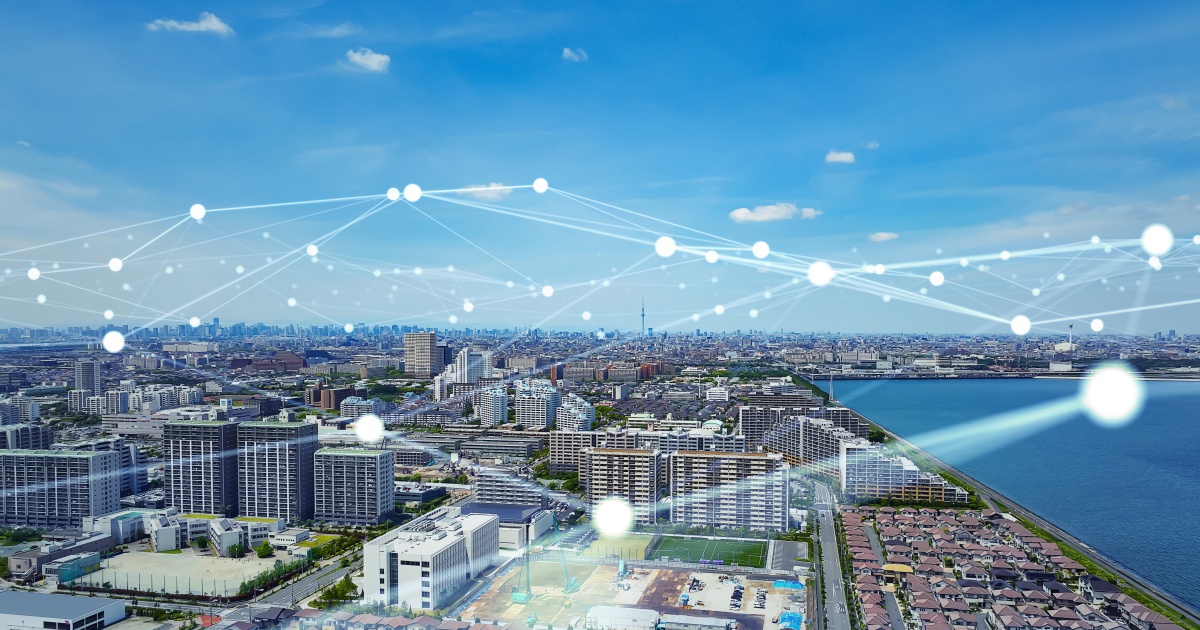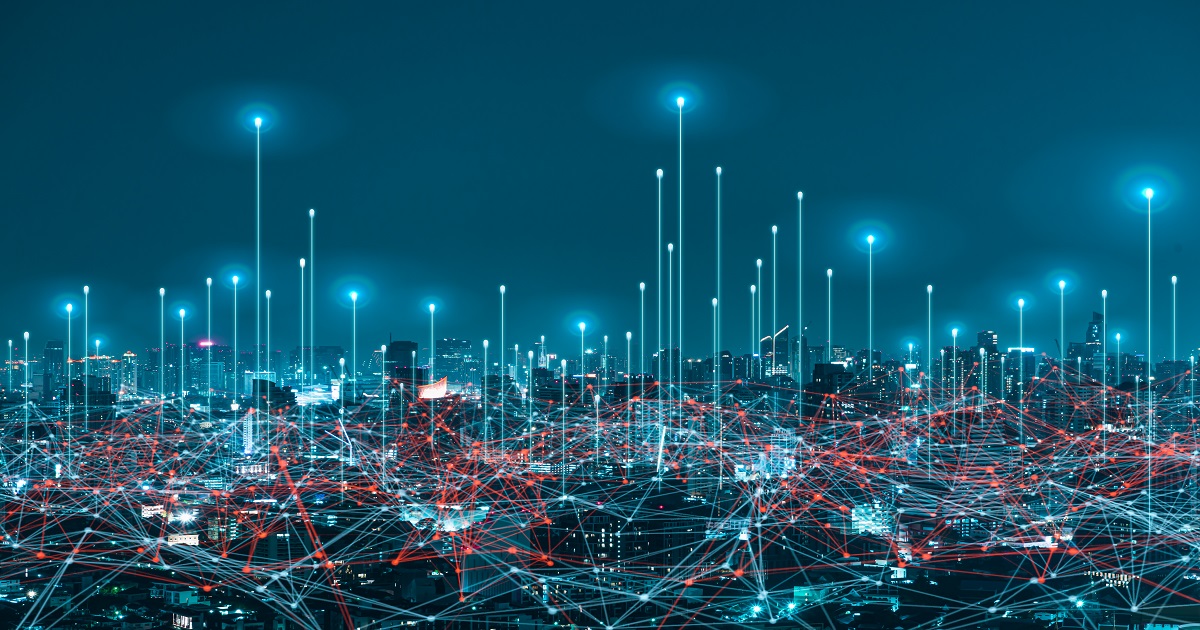
LoRa (Long Range) and LoRaWAN (Long Range Wide Area Network) technologies are at the forefront of the IoT revolution. They are delivering the connectivity needed for IOT deployments and are creating a world where everyday objects and industrial machines can connect and communicate over long distances with minimal power consumption. The impact is far-reaching, with the potential to drastically improve efficiency, safety, and sustainability in nearly every business sector.
What are LoRa and LoRaWAN?
LoRa is a wireless data communication technology designed for long-range communication with low power consumption. This makes it ideal for IoT devices that need to send small amounts of data over long distances while preserving battery life.
LoRaWAN, on the other hand, is a media access control (MAC) layer protocol designed for large-scale public networks with a single operator. It's built on top of LoRa technology, providing the framework for how devices communicate across the network. LoRaWAN is designed to allow low-powered devices to communicate with Internet-connected applications over long-range wireless connections.
Growth and Impact on IoT
The LoRa and LoRaWAN IoT market is burgeoning. According to a recent report, the market is estimated at $5.6 billion this year, with growth projections at a CAGR of 35.3% from 2023 to 2028 putting the market at $25.5 billion by that time. This growth is driven by several factors, including the rising demand for low-power, long-range wide-area network connectivity, the increasing focus on cost efficiency, and the growing demand for IoT applications.
Government initiatives to establish smart cities are also playing a critical role in driving the adoption of LoRa and LoRaWAN – they allow cities to implement a wide range of IoT applications that optimize processes, enhance safety, and streamline operations.
Hardware and Infrastructure
Key to the deployment of LoRa and LoRaWAN are System on Chip (SoC) technologies. These are hardware components that integrate microprocessors, memory, and communication interfaces onto a single chip. SoCs designed specifically for LoRaWAN communication enable IoT devices to connect to LoRaWAN networks and transmit data. They offer a compact, cost-effective, and low-power solution for building connected devices, a factor that has led many semiconductor manufacturers to invest heavily in developing SoC solutions specifically designed for the IoT market.
LoRaWAN Use Cases
LoRaWAN has become a key part of a wide range of applications across various sectors. One of the fastest-growing sectors adopting these technologies is transportation and logistics. Here, long-range connectivity, low power consumption, and the ability to connect numerous devices simultaneously offer valuable advantages. For example, real-time tracking and monitoring of assets, vehicles, and shipments become feasible, transforming operations and driving efficiency in these industries and helping reduce ongoing supply chain challenges.
But, there are many other industries where LoRaWAN is driving benefits thanks to the ability to provide long-range, low-power connectivity for IoT devices. Here are some specific use cases for LoRaWAN:
Smart Agriculture – LoRaWAN is used in smart agriculture to monitor soil conditions. For instance, soil moisture sensors such as the CLOVER and KIWI devices monitor soil moisture, temperature, ambient temperature and humidity, and light. These sensors have a long battery life of up to 10 years and have been used successfully in places like La Sapienza Botanical Garden in Rome and Brook House Farm in Bromyard to optimize irrigation and ensure the health of plants.
Healthcare – LoRaWAN enables real-time monitoring and tracking of patients, medical devices, and health-related data. This aids in quicker response times to changes in patient conditions and helps reduce costs associated with manual data collection, leading to improved patient outcomes.
Oil and Gas – LoRaWAN can be used to monitor and manage pipelines, drilling rigs, and other remote assets in the oil and gas industry. It allows companies to monitor production levels, detect potential leaks and contamination, and ensure safety and compliance with industry regulations.
Smart Buildings – In the context of smart buildings, environmental sensors that measure temperature and humidity are commonly used. These sensors can be configured over the air to support various smart home and office IoT applications. Motion sensors are also used to track occupancy in certain areas of a building and help keep track of assets. For instance, they can be connected to room booking systems for effective meeting planning and management.
Asset Tracking – In addition to transportation and logistics, location trackers can also locate employees throughout the workplace. This can be hugely beneficial in dangerous, high-risk or hazardous environments where worker monitoring is critical to safety. The devices are usually small in size and can be easily attached to an asset without the need for additional mounting equipment.
Challenges and Advantages
Despite the numerous opportunities, LoRaWAN adoption doesn’t come without its challenges. Data security and privacy concerns, for instance, can pose significant barriers, especially given the increasing numbers of connected devices and the sensitive nature of the data they may handle. Additionally, lack of governance and standardization could potentially hinder the growth and expansion.
Still, these challenges aren’t unique to LoRaWAN, and its benefits over alternative technologies are proving sufficient enough to drive continued growth.
- Long Range Connectivity – LoRaWAN can provide connectivity over long distances (more than 9 miles in rural areas and 1-3 miles in urban settings. This makes it ideal for applications that require wide area coverage, such as smart agriculture, smart city applications, or asset tracking across large geographical areas.
- Low Power Consumption – LoRaWAN is designed for low power operation. Devices using LoRaWAN can function for years on a single small battery, which is a crucial advantage for IoT devices that need to be deployed without a reliable power source or in hard-to-reach areas. This also reduces maintenance costs.
- High Capacity – LoRaWAN networks can support a large number of connected devices. A single LoRaWAN gateway can handle thousands of nodes, making it suitable for IoT deployments with a large number of sensors or devices.
- Cost-Effective – The cost of deploying and maintaining a LoRaWAN network is relatively low compared to alternatives like cellular IoT. The hardware costs are generally lower, and there are no ongoing data costs if you are operating your own network.
- Security – LoRaWAN has built-in security features at the network level, including unique network session keys for each device and end-to-end encryption, ensuring data privacy and security.
- Flexibility and Scalability – LoRaWAN supports both public and private network deployments, offering businesses the flexibility to choose the best approach for their needs. It's also highly scalable, allowing for the addition of more devices as necessary.
Indeed, the outlook is optimistic, at worst and, if the market projections are to be believed, quite positive. As smart city initiatives continue to rise worldwide and the adoption of intelligent devices increases, LoRaWAN is posed to play a pivotal role in shaping the future of IoT. By addressing the challenges and capitalizing on the opportunities, these technologies can revolutionize how we connect and interact with the world around us, driving the next wave of innovation in the IoT landscape.
Edited by
Erik Linask





